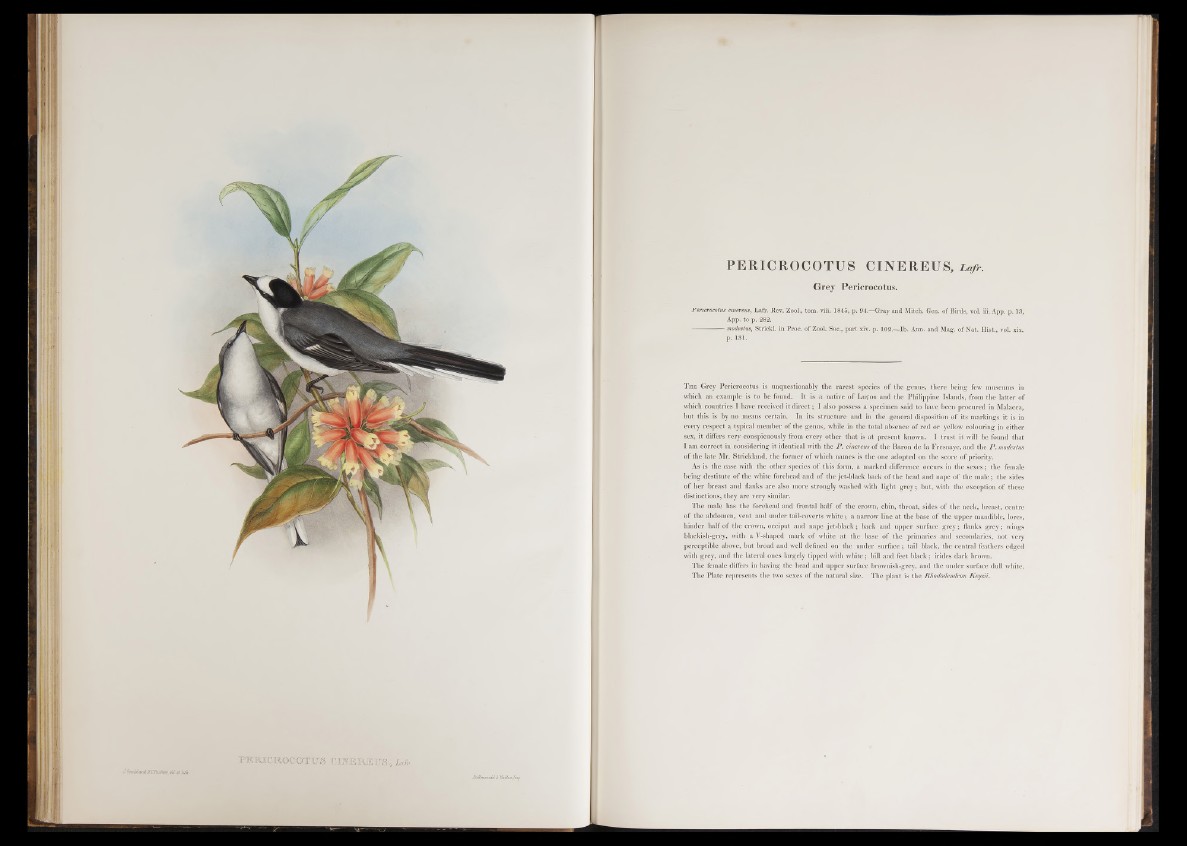
J.Gmdiani, ILÇRjùihïcr, id. et liik-
PERICROCOTTTS C IH EK EU S , 'lA .
JûÆmwnM l W-binJmp.
PERICROCOTUS CINEREUS, Lajr.
Grey Pericrocotus.
Pericrocotus cinereus, Lafr. Rev. Zool., tom. viii. 1845, p. 9 4—Gray and Mitch. Gen. of Birds, vol. iii.App. p. 13,
App. to p. 282.
--------------modestus, Strickl. in Proc. of Zool. Soc., part xiv. p. 102.—Ib. Ann. and Mag. of Nat. Hist., vol. xix.
p . 131.
T h e Grey Pericrocotus is unquestionably the rarest species o f the genus, there being few museums in
which an example is to be found. I t is a native of Lufon and the Philippine Islands, from the latter of
which countries I have received it d ire c t; I also possess a specimen said to have been procured in Malacca,
but this is by no means certain. In its structure and in the general disposition of its markings it is in
every respect a typical member of the genus, while in the total absence of red or yellow colouring in either
sex, it differs very conspicuously from every other that is a t present known. I trust it will be found that
I am correct in considering it identical with the P . cinereus o f the Baron de la Fresnaye, and the P . modestus
of the late Mr. Strickland, the former of which names is the one adopted on the score of priority.
As is the case with the other species of this form, a marked difference occurs in the sexes; the female
being destitute of the white forehead and of the jet-black back of the head and nape of the male; the sides
o f her breast and flanks are also more strongly washed with light g rey ; but, with the exception of these
distinctions, they are very similar.
The male has the forehead and frontal half of the crown, chin, throat, sides of the neck, breast, centre
of the abdomen, vent and under tail-coverts white; a narrow line at the base of the upper mandible, lores,
hinder half o f the crown, occiput and nape jet-black; back and upper surface g rey ; flanks g rey ; wings
blackish-grey, with a V-shaped mark of white at the base o f the primaries and secondaries, not very
perceptible above, but broad and well defined on the under surface ; tail black, the central feathers edged
with grey, and the lateral ones largely tipped with white; bill and feet black; irides dark brown.
The female differs in having the head and upper surface brownish-grey, and the under surface dull white.
The Plate represents the two sexes of the natural size. The plant is the Rhododendron Keysii.